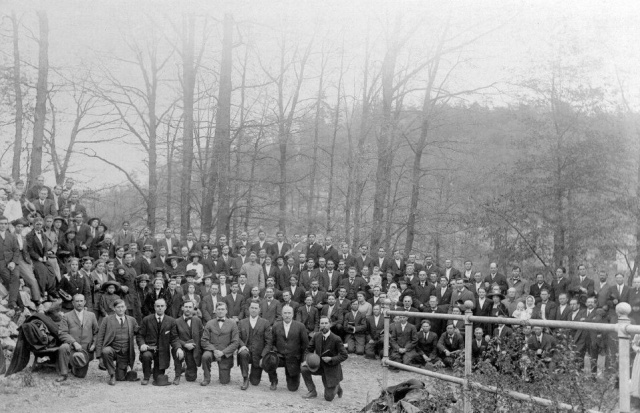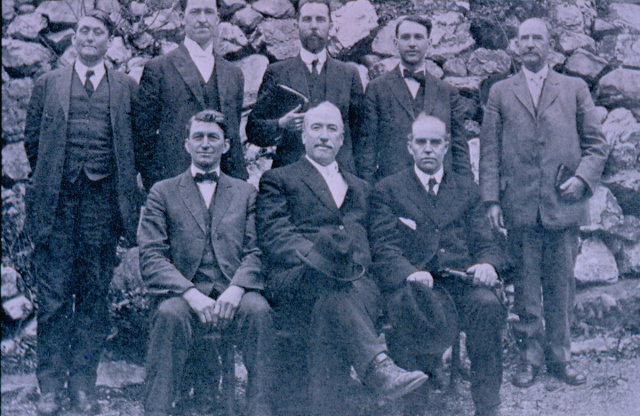
Brief History of the Assemblies of God
The General Council of the Assemblies of God (USA), one of the largest Pentecostal denominations in the United States, was organized in 1914 by a broad coalition of ministers who desired to work together to fulfill common objectives, such as sending missionaries and providing fellowship and accountability. Formed in the midst of the emerging worldwide Pentecostal revival, the Assemblies of God quickly took root in other countries and formed indigenous national organizations. The Assemblies of God (USA) is a constituent member of the World Assemblies of God Fellowship – one of the largest Pentecostal fellowships in the world.
Historical Roots
Throughout the latter half of the 19th century in the United States, Protestants from various backgrounds began to ask themselves why their churches did not seem to exhibit the same vibrant, faith-filled life as those in the New Testament. Many of these believers joined evangelical or Holiness churches, engaged in ardent prayer and personal sacrifice, and earnestly sought God. It was in this context that people began experiencing biblical spiritual gifts.
Pentecostals pioneers were hungry for authentic Christianity, and they looked to previous spiritual outpourings, such as the First Great Awakening (1730s-40s) and Second Great Awakening (1800s-30s), for inspiration and instruction. They identified themselves in the tradition of reformers and revivalists such as Martin Luther, John Wesley, and Dwight L. Moody.
The Pentecostal Revival
One of the focal points of the emerging Pentecostal movement was known as the Azusa Street revival (1906-09). It was an unlikely location for an event that would change the face of Christianity. In the summer of 1906, revival erupted in the newly-formed congregation meeting at the small, run-down Apostolic Faith Mission at 312 Azusa Street in Los Angeles, California. Critics attacked the congregation because its mild-mannered African-American Holiness preacher, William J. Seymour, preached racial reconciliation and the restoration of biblical spiritual gifts. The revival soon became a local sensation, then attracted thousands of curiosity seekers and pilgrims from around the world.
Seymour had been a student of Charles Parham, who provided the doctrinal framework for the young Pentecostal movement. Parham’s identification in scripture of speaking in tongues as the “Bible evidence” (later called the “initial evidence”) of Spirit baptism became a defining mark of the emerging Pentecostal movement. After students at his Bethel Bible School in Topeka, Kansas, began speaking in tongues at a prayer meeting on January 1, 1901, Parham, through his Apostolic Faith Movement, had some success in promoting the restoration of the gift of tongues. While the Apostolic Faith Movement was largely confined to the south central United States, the revival at Azusa Street catapulted Pentecostalism before a worldwide audience.

Formation of the Assemblies of God
As the revival rapidly spread, many Pentecostals recognized the need for greater organization and accountability. The founding fathers and mothers of the Assemblies of God met in Hot Springs, Arkansas on April 2-12, 1914 to promote unity and doctrinal stability, establish legal standing, coordinate the mission enterprise, and establish a ministerial training school. These founders constituted the first General Council and elected two officers: Eudorus N. Bell as chairman (title later changed to general superintendent) and J. Roswell Flower as secretary, as well as the first executive presbytery.

Hot Springs, Arkansas
The approximately 300 delegates to the first General Council represented a variety of independent churches and networks of churches, including the “Association of Christian Assemblies” in Indiana and the “Church of God in Christ and in Unity with the Apostolic Faith Movement” from Alabama, Arkansas, Mississippi, and Texas.
Almost immediately, leaders were faced with a doctrinal dispute – whether to abandon traditional Trinitarian theology in favor of a modal monarchian view of the godhead (also called the “New Issue” or Oneness theology). In 1916 the General Council approved a Statement of Fundamental Truths, which affirmed Trinitarian orthodoxy.
From the beginning, evangelism and missions have been central to the identity of the Assemblies of God and have resulted in a continuing growth at home and abroad. In 2007, the Assemblies of God claimed a constituency in the United States of 2,836,174 adherents; 12,311 churches; and 33,622 ministers. The General Council supported 2,691 foreign missionaries and associates working with the broader World Assemblies of God Fellowship, whose adherents numbered more than 57 million.
The aggressive missions programs of the church are designed to establish self-supporting and self-propagating national church bodies in every country. Ministers and leaders are trained in 1,891 foreign Bible schools. The Assemblies of God has 19 endorsed Bible colleges, universities, and a seminary in the United States.
The National Office of the Assemblies of God is located in Springfield, Missouri. The National Office includes an administration building, the Gospel Publishing House, and the International Distribution Center. The Gospel Publishing House, the printing arm of the church, turns out more than 12 tons of gospel literature each day.
Fundamental doctrines
The central beliefs of the Assemblies of God are summarized in its Statement of Fundamental Truths.[7] Numerous other Christian groups share some or all of these tenets, and some positions are considered more central to the faith than others. The following is a summary of these 16 non-negotiable Truths:
- The Bible is inspired by God and is "the infallible, authoritative rule of faith and conduct".
- There is only one true God who exists as a Trinity.
- Jesus Christ is the Son of God and, as the second person of the Trinity, is God.
- Man was created good by God but was separated from God through original sin.
- Salvation "is received through repentance toward God and faith toward the Lord Jesus Christ". For more information, see the Core beliefs section below.
- There are two ordinances. Believer's baptism by immersion is a declaration to the world that the believer has died and been raised together with Christ, becoming a new creation. The Lord's Supper is a symbol expressing the believer's sharing in the divine nature of Christ, a memorial of Christ's suffering and death, and a prophecy of Christ's second coming.
- Baptism in the Holy Spirit is a separate and subsequent experience following conversion. Spirit baptism brings empowerment to live an overcoming Christian life and to be an effective witness. For more information, see the Core beliefs section below.
- Speaking in tongues is the initial physical evidence of the baptism in the Holy Spirit.
- Sanctification is "an act of separation from that which is evil, and of dedication unto God". It occurs when the believer identifies with, and has faith in, Christ in his death and resurrection. It is not believed to be a "second definite work of grace" (see Finished Work), as in some other Pentecostal denominations, but is understood to be a process in that it requires continual yielding to the Holy Spirit.
- The Church's mission is to seek and save all who are lost in sin; the Church is the Body of Christ and consists of all people who accept Christ, regardless of Christian denomination.
- Divinely called and scripturally-ordained ministers serve the Church.
- Divine healing of the sick is provided for in the atonement.
- The "imminent and blessed hope" of the Church is its rapture preceding the bodily return of Christ to earth.
- The rapture of the Church will be followed by the visible return of Christ and his reign on earth for a thousand years. For more information, see the Core beliefs section below.
- There will be a final judgment and eternal damnation for the "wicked dead".
- There will be future new heavens and a new earth "wherein dwelleth righteousness".
|